Unlike the 25 per cent taxes imposed on steel and aluminium last month, the new duties impact all Australian imports into the US, and will therefore have a far more widespread impact across the economy.
So how will they impact Australia? From potential interest rate cuts to the likelihood of a global economic downturn, this is what you need to know.
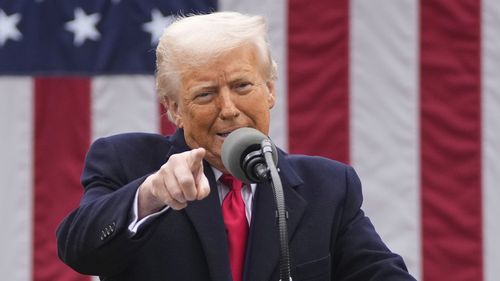
Will Australians be hit with price rises due to the tariffs?
Tariffs are paid by the importer, not the exporter, so the consumers who are likely to face higher prices are Trump’s own constituents: the American people.
“The US will, of course, bear the brunt of the inflation uplift,” Wilsons Advisory head of investment strategy David Cassidy said.
Meat and Livestock Australia (MLA), which is particularly impacted by the tariffs given Trump singled out Australia’s beef exports and ban on American beef, said local shoppers needn’t worry about new price rises.
“US tariffs will impact the prices paid by American families and may have flow-on impacts on the supply chain,” MLA managing director Michael Crowley said.
“It is unlikely these changes will make a difference to retail prices here in Australia.”
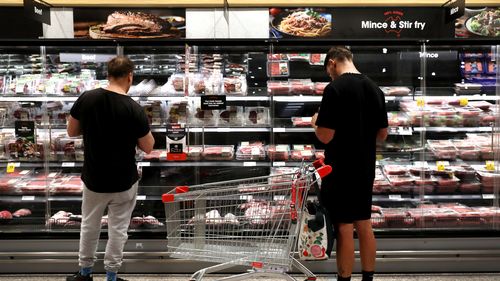
So what will the impact on Australia’s economy be?
It’s worth noting from the outset that the exact impact of the tariffs is up in the air, and will be dictated by a range of factors, including other nations’ responses (particularly China’s) and whether there are more taxes to be announced.
Only about 4 per cent of exported Australian goods go to the US, leaving the vast majority unimpacted.
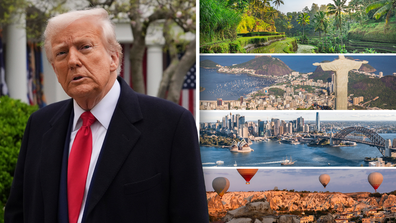
The full list of Trump’s ‘reciprocal’ tariffs
Gold and pharmaceuticals, which are two of the top five exports to the United States, also appear to have been exempted from the tariffs, providing further reprieve for the local economy.
The biggest direct impact will be felt by the beef industry. Worth billions of dollars each year (the Red Meat Advisory Council puts the figure for 2024 at $4.16 billion), it is Australia’s biggest export to the US, and simultaneously the US is the Australian beef industry’s biggest market.
While exports will continue despite the tariffs, it’s likely to lead to less demand for Australian meat.
“Our beef industry will need to look for alternative markets to stay viable,” Professor Robert Brooks from Monash Business School said.
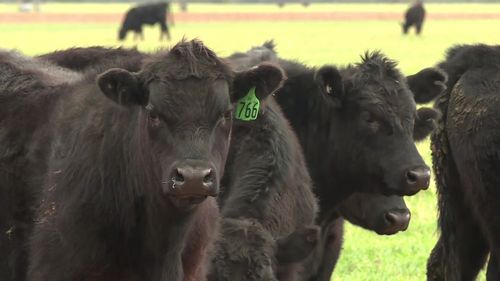
What about indirect impacts on the Australian economy?
This is where things start to get a bit more worrisome.
The Australian stock exchange – as with plenty of other share markets – has already spent a day swimming in the red following the tariff announcement.
It closed the trading day down a little more than 1.07 down on Thursday, roughly a $33 billion loss, which was actually an improvement on the more than $50 billion shed in the hours after Trump made the new taxes official.
Local industries are also worried about the potential for other nations – many of whom have been hit far more severely by the new tariffs – to look to Australia as a new or increased market for their goods now the US is a less viable option.
That could lead to them dumping a high volume of cheap produce here, undercutting local businesses.

The federal government announced some financial support to encourage shoppers to buy Australian during last week’s federal budget, and Prime Minister Anthony Albanese yesterday said anti-dumping measures will be strengthened.
Then there’s the risk of a global economic downturn if Trump’s tariffs are met with retaliation and a widespread trade war breaks out.
“While Australia’s direct trade exposure to the US is minimal, the knock-on effects via China and broader Asian nations that have seen hefty tariffs could weigh on our export-heavy economy, especially if global demand slows and commodity prices retreat,” eToro market analyst Josh Gilbert said.
“For a small, open economy like Australia, any slowdown in global growth would have an impact locally.”
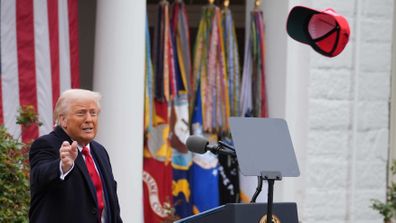
Trump’s ‘Liberation Day’ announcement in the Rose Garden
One particularly important economy is China, where, as our largest trading partner, a reduction in demand would hurt Australian exporters.
“What happens to growth in China will be critical,” Brooks said.
“Any slowdown there, particularly as a result of escalating trade tensions, could have ripple effects for the Australian economy.”
Some economists are worried the tariffs could go as far as to spark recessions in the next nine months.
“These policies, if sustained, would likely push the US and global economy into recession this year,” JPMorgan analysts said in a note to investors.
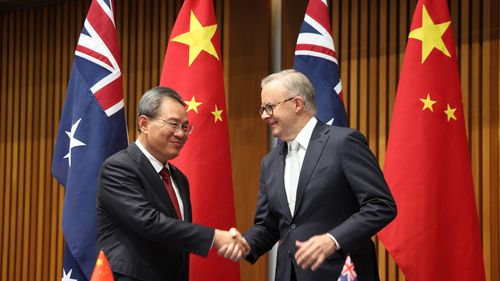
Are there any potential benefits?
There are a couple of silver linings that could emerge for Australia.
Chief among them is the potential for a free trade deal with the European Union – which has been long discussed but never signed off on – to finally be inked as both economies seek new markets for their export goods.
Australian mortgage holders will also welcome the news that traders now believe there’s a better chance of more interest rate relief throughout the year.
The market is now all but certain of another rate cut in May – it was previously pricing in a 79 per cent chance of the Reserve Bank reducing the cash rate in its next meeting – and is optimistic of a further three by the end of 2025, one more than previously expected.



![Outgoing Sen. Thom Tillis: I Don’t Deal With Trump’s ‘[Expletive]’](https://celebjam.com/wp-content/uploads/2025/07/Outgoing-Sen-Thom-Tillis-I-Dont-Deal-With-Trumps-‘Expletive-380x200.jpg)


